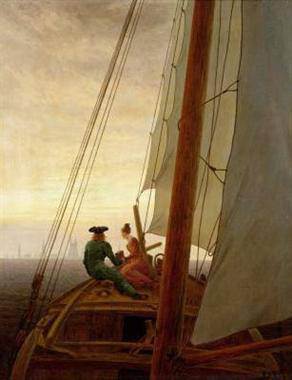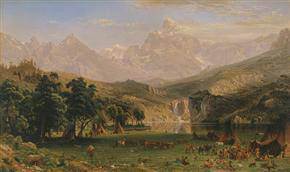
Caspar David Friedrich, On the Sailing Boat, 1818. © The State Hermitage Museum, St Petersburg, 2009

Caspar David Friedrich, Woman before the Setting Sun, ca 1818. © Museum Folkwang, Essen
Caspar David Friedrich at the NationalMuseum, Sweden
Caspar David Friedrich, the leading painter of the German Romantic era, is nowadays regarded as one of the greatest figures in the history of art. Nevertheless, he remains relatively unknown in Sweden outside art history circles. This October, Nationalmuseum will set out to change this by presenting Scandinavia’s first monographic exhibition of works by Friedrich. In all, over 90 artworks will be on show, including some 40 paintings. In his paintings, Friedrich depicts the Romantic belief in an animated nature where the divine permeates everything
Nationalmuseum, Stockholm, from 2 October 2009 until 10 January 2010
]]>
Fairly small images lead the onlooker into suggestive landscapes of mountains, sea and land. Silent human figures are lost in their surroundings, and the images convey a contemplative mood charged with a spiritual presence below the surface.
In Friedrich’s view, the artist’s emotions alone should determine the character of the work. Artists should paint not only what they saw in front of them, but especially what they saw inside themselves. Thus a landscape painting becomes a kind of self-portrait reflecting the artist’s personality.
A number of Scandinavian connections feature in Caspar David Friedrich’s life and art. He was born 1774 in the port city of Greifswald in the north German province of Pomerania, which at the time belonged to Sweden. He attended the Copenhagen academy of fine art. During his many years in Dresden, he was close friends with the Norwegian painter Johan Christian Dahl. Friedrich’s world of imagery also has some obvious Scandinavian features. But despite these links, not one work by Friedrich hangs in a Swedish gallery.
“Obtaining loans of Friedrich’s art is a laborious process”, explains Torsten Gunnarsson, exhibition curator. “There is not one known work in a Swedish collection. So we are delighted to be able, thanks to our international contacts, to present a monographic exhibition to the Swedish public for the first time.”
Follow us on:


